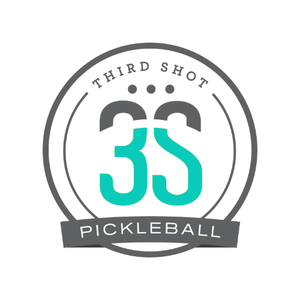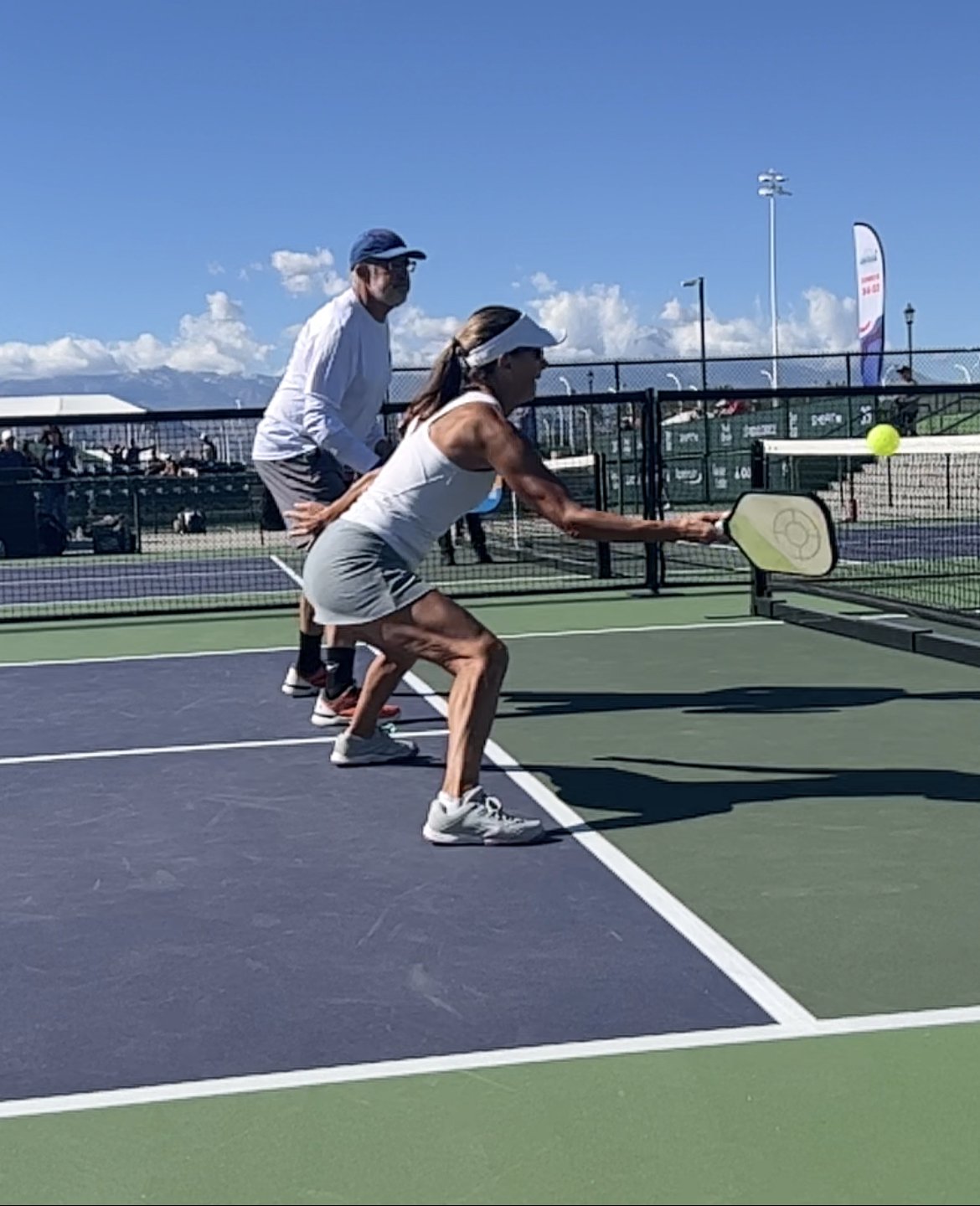Mistake #1: Why Returning Serve and Going to the Net Matters. If you ask 20 people why they should run to the net after returning a serve, you’re likely to get a variety of different answers. The most common ones will be some version of: it’s where the game is won or lost; because it’s not tennis; if you control the net, you control the point; the first team to the net usually wins. None of these answers actually get to the tactical value of returning and running. So let’s make it more clear.
By coming to the net after the return you pressure your opponents by taking away their time to react — and you do so in two different ways: First, you are shortening the distance between your team and theirs. This means when they hit the third shot, it will travel a shorter distance before you hit it back compared to if you were in the backcourt. Shorter flight time means shorter reaction time for the other team.
Second, by being at the net you make it more likely you get the ball when it is high (or at least above net height). This means you have an opportunity to hit on a downward trajectory which will allow you to hit hard while still keeping the ball in play. This is a huge strategic advantage. In both cases, the forward movement is primarily about applying pressure by limiting time.
Returning serve and coming to the net allows you to add pressure by stealing time and space.
Mistake #2: You Should Always Move as a Team. It is commonly believed that players on a doubles team should move in unison. As one moves forward, so does the other. If a player shuffles left to chase a dink, their partner follows suit. But the truth is, this isn’t the way that strong players operate. Let’s look at some counter-examples:
If you or your partner send a high ball to your opponent, it is likely to be smashed back at you. In this situation, it is important to buy yourself as much time as possible to react. This is where retreating makes sense since the increased distance increases reaction time. But if your partner stubbornly stays at the NVZ don’t make a bad situation worse by sticking with them. Back up and give yourself a fighting chance, even if they don’t.
A second example of smart times to move independently as opposed to a team is when you are playing with a partner who has solid third shot drops. If you are confident they are going to hit a slow and low shot that is hard to attack, there is no need to stand beside them as they do so. Get on your horse and move forward, looking to apply pressure at the net! Again, this is assuming you are confident your partner has a steady drop.
Speaking of drops…
Mistake #3: You Should Drop the Third Shot. Are your opponents amazing volleyers? Is your drive easy to handle? Is the return really low? If your answer to these questions is “no”, you should consider using a third shot drive.
Drops are hard to hit and have limited payoff. A poor drop almost always leads to a lost point since it is either in the net or easy to attack. There is a major consequence for messing up. Let’s say you do manage to hit a good drop…Congratulations!!! You’ve now given a slow ball right to your opponents. Not so exciting.
True, a good drop limits the net team’s ability to cause damage with speed, but it typically doesn’t cause any trouble of its own. So when you play a drop you are attempting a difficult shot, with limited reward and lots of risk. Not very appealing. On the other hand, a good drive takes away reaction time and is usually easier for people to hit. And in many cases, even if it isn’t hit perfectly, it usually doesn’t lead to devastating consequences. I talked about this at length with one of the best players in pickleball today and you can listen here.
What’s the takeaway? Unless your opponents put you in a position where a drive doesn’t make sense, smack that ball and try to cause some trouble!
Mistake #4: Why Deep Returns Are Important. Most people think that returns should be deep for one of two reasons: 1) it gives you time to get to the net; or 2) it keeps your opponents back. Neither is actually true.
The pros are good at returning deep yet when you watch them play, all four are regularly at the net. This is evidence that drops don’t actually have the power of keeping players back. A decent drop (or, frankly, a drive or lob) can easily allow players to get to the net after the third shot. So much for that theory.
And a deep return doesn’t necessarily buy time to move forward to the net. A deep return that is hit hard and low will afford the returner very little time to move. Time to move forward is dictated by the height of the return, not its depth. So why do deep returns really matter?
A deep return puts the serving team far away from the net — in a place where they can’t do much damage.
A deep return puts the serving team in a position where they are unlikely to cause trouble. If they are at or behind the baseline, they have a long way to hit their third shot. That makes the drop tough for them and the drive easier for you to handle. The deep return is actually about making life at the net a little easier.
Mistake #5: Where to Hit a Fast Ball. People often think fast balls when received at the net should either be hit deep to the baseline or short in the kitchen. The argument is that if the ball is played back deep, the player can’t do much damage. And if short, they’ll have to scramble. These aren’t necessarily untrue, but they fail to pinpoint the best reply to a fast ball.
Players who hit hard are looking for a high ball to attack. So rather than focusing on the depth of the volley, players would do well to pay attention to focus on returning the ball low. Not because it necessarily wins the point, but because low balls make it difficult for people to hit hard and still keep the ball in play. In an emergency situation, the focus should be less on winning the point and more on putting out the fire.
Mark Renneson is the Founder of Third Shot Sports and Pickleball Coaching International. He can be found travelling North America helping people of all levels improve their pickleball.





